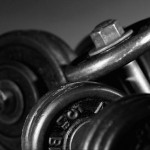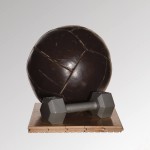 According to the Physical Activity Guidelines published by the US Department of Health and Human Services, adults need to exercise for at least 150 minutes at moderate intensity during a week in order to gain health benefits. Exercise is crucial for good mental and physical health. Exercise can help to control weight, improve strength and endurance, and keep chronic illnesses such as diabetes and metabolic syndrome at bay.*
According to the Physical Activity Guidelines published by the US Department of Health and Human Services, adults need to exercise for at least 150 minutes at moderate intensity during a week in order to gain health benefits. Exercise is crucial for good mental and physical health. Exercise can help to control weight, improve strength and endurance, and keep chronic illnesses such as diabetes and metabolic syndrome at bay.*
Know Your Fitness Goal
Before you decide which exercise routine to follow, you should have a clear idea of your fitness goal. If you are just starting out because you got an earful the last time you visited the doctor, then your immediate goal may be to reduce weight, or manage your diabetes. You may be one of those who already follow a healthy lifestyle, but now want to dial up the fitness part and train for a marathon or a 5K. You might have some body-building goal in mind, or want to improve your flexibility. You may want to become serious about playing a sport, rather than just going for a weekend game now and then.
Choose an exercise routine specifically to achieve your goal.
For example, if you are just starting out, you may want to start with a low-impact or non-impact aerobic activity and aim for at least 30 minutes five days a week. If its body building you are after, you will need a strength training routine that targets specific muscles, with different sets of muscles coming into play in each session. You also need to figure out if you want to work out at home, outdoors, or at a gym. You may want a full-service health club offering amenities such as a swimming pool, sports options, a sauna and a massage service.
Different Types of Exercise
1. Cardio
Cardio is physical exercise of low to high intensity that causes you to breathe harder, gets your heart beating faster than at rest, and makes you sweat. Walking, running, cycling, swimming and dancing are all examples of aerobic exercise. Start with a moderate routine, and then dial up the intensity. Popular aerobics exercise classes offered by health clubs include spinning, high intensity interval training, dancing, aqua aerobics, and so on. Exercise classes also help you to meet new people and can be more motivating than exercising solo. Remember, if you are a beginner to exercise, or have any health condition, you should always talk to a doctor before beginning any exercise routine.
2. Strength Training
This is a form of exercise designed to strengthen the muscles, either by using weights such as free weights, kettlebells, or resistance bands, or by using the body’s own weight. A strength training routine should target different sets of muscles on successive days. There are many exercise routines that combine cardio and strength training; this combination has the dual benefit of increasing your fitness and enhancing your strength. Since strength training can lead to injury if not done correctly, it is a good idea to use a personal trainer, at least in the initial days, so as to learn the correct form. Confirm your trainer is certified by the American Council on Exercise. You can then be rest assured that your trainer knows what she is doing.
3. Sports
Whether a team sport or an individual effort, sports can be a great way of building exercise into your daily schedule. Choose your sport based on your fitness level, familiarity with the sport, access to the proper facilities; don’t forget to consult your doctor.
Justin Ross is a marketing manager at New York Health & Racquet Club. With 20 years of experience in health and fitness, Justin loves to write and talk about different aspects of healthy living. For more info go to www.nyhrc.com, Facebook and follow along via Twitter.
*Disclaimer: Result may vary from person to person.
 Subscribe
Subscribe

